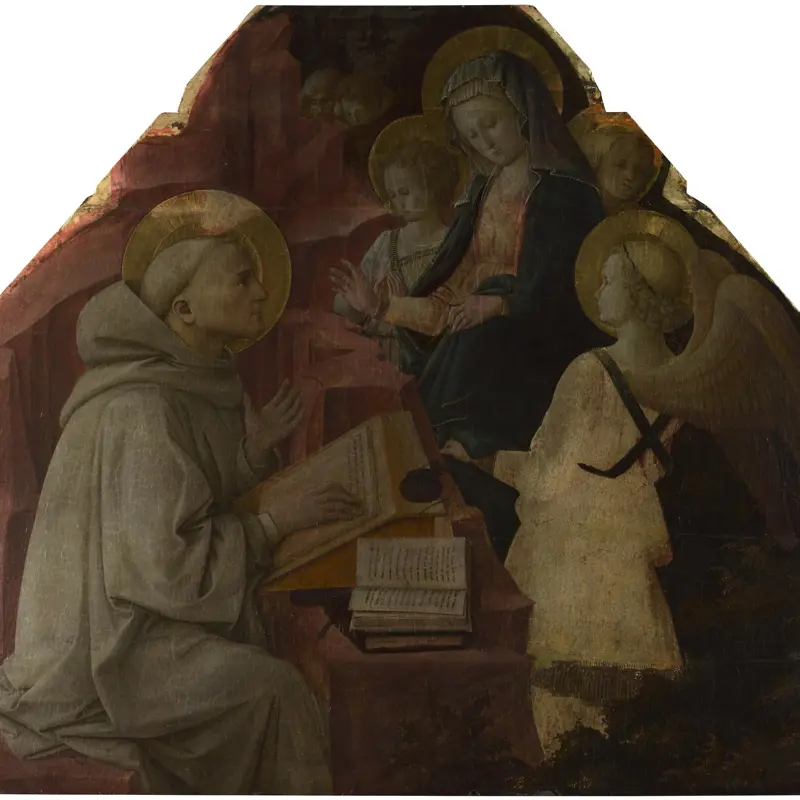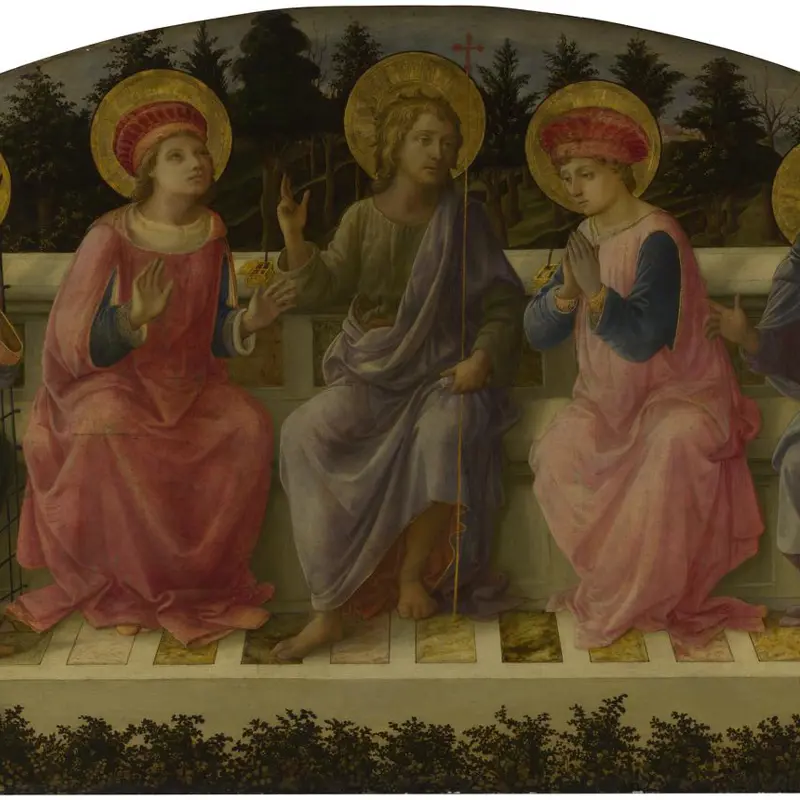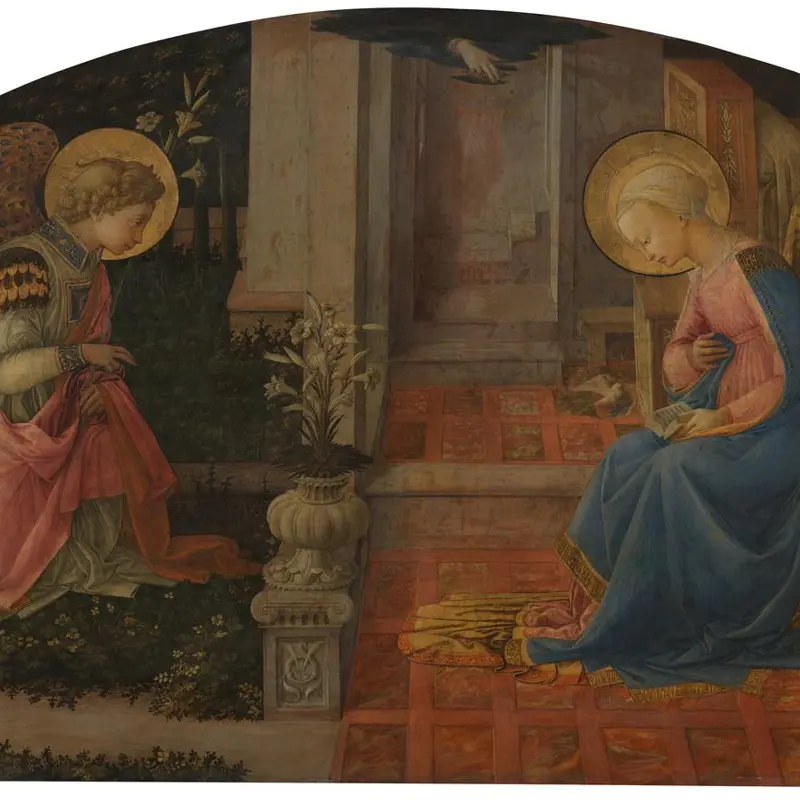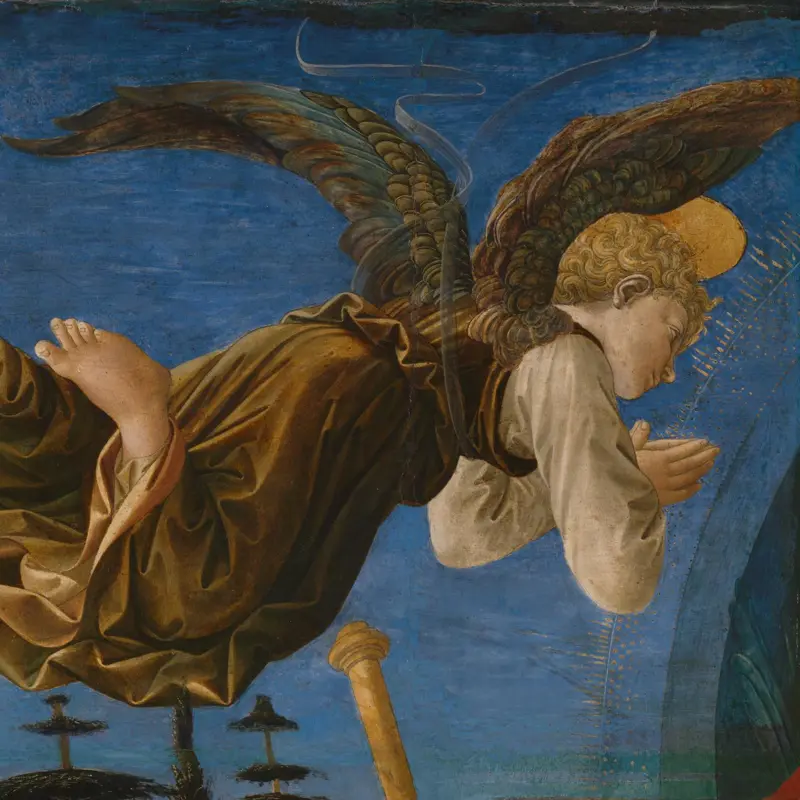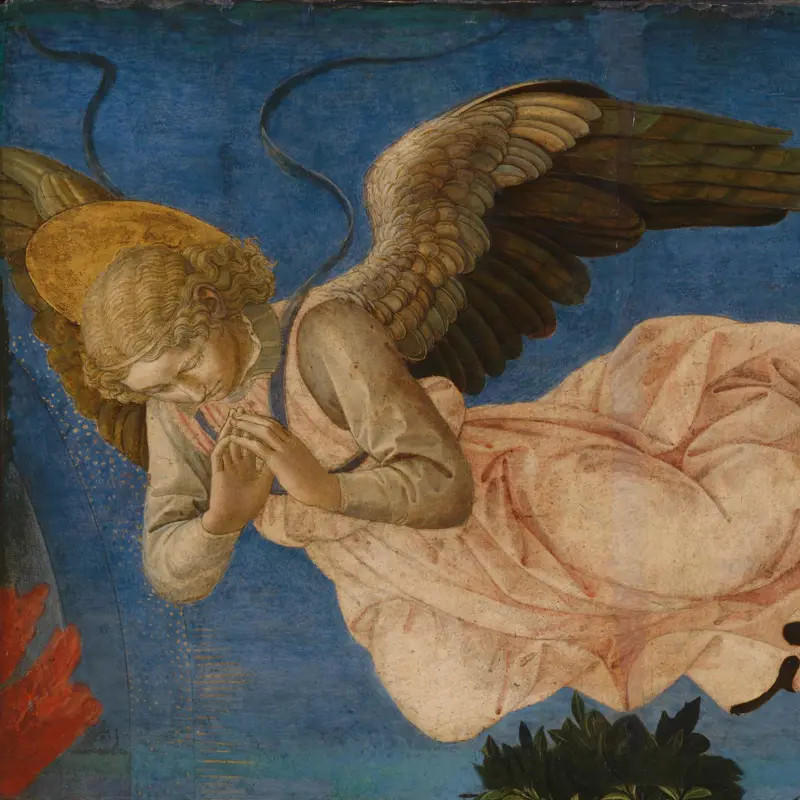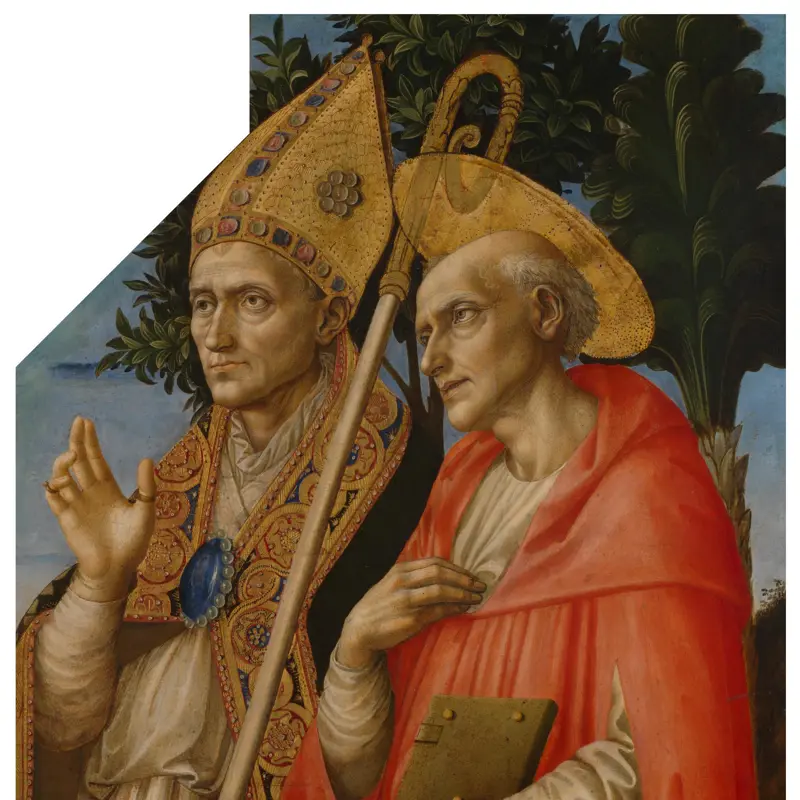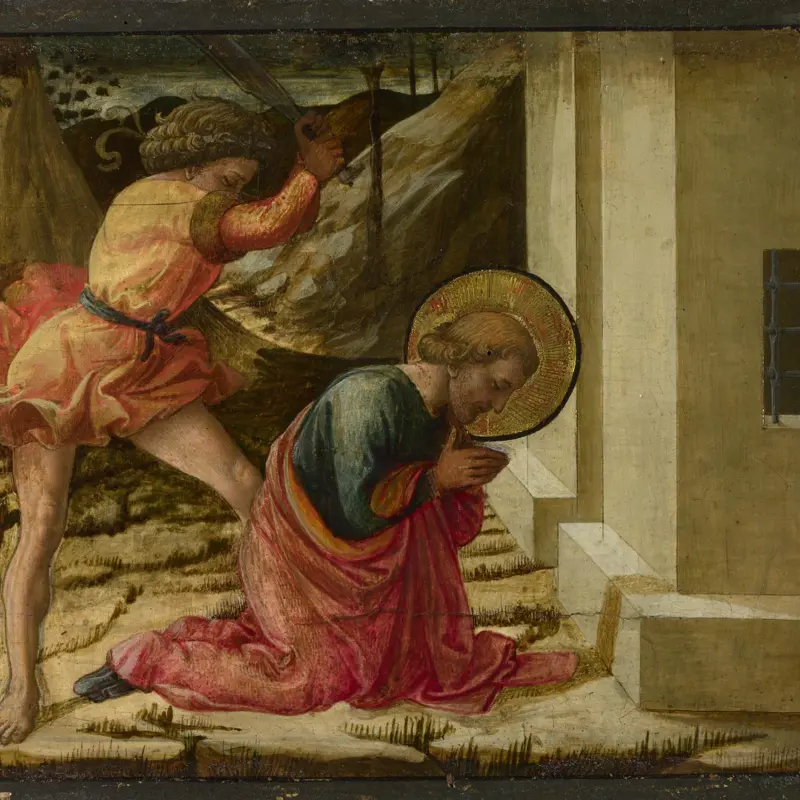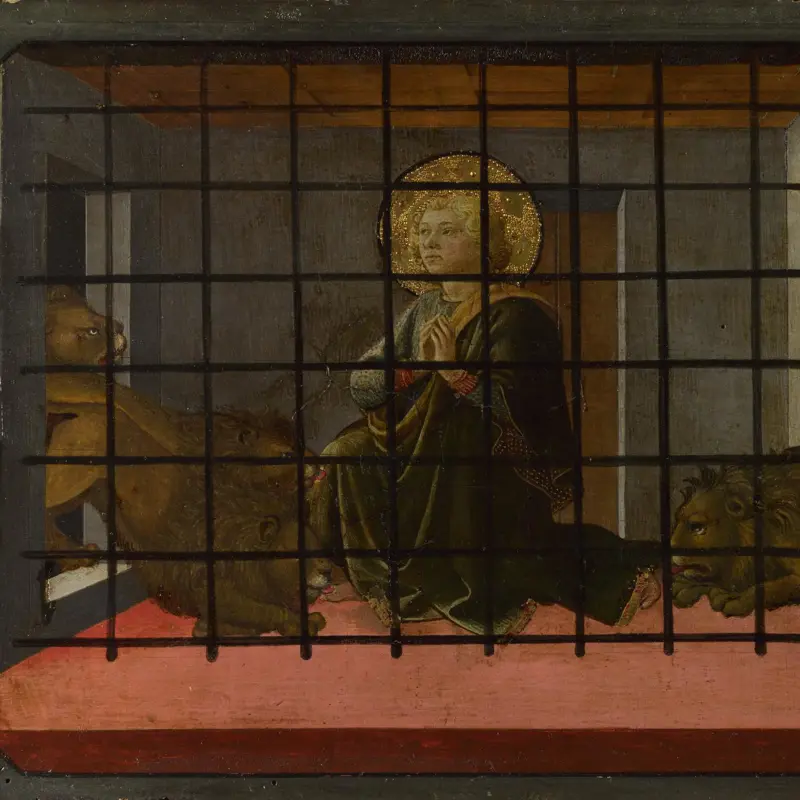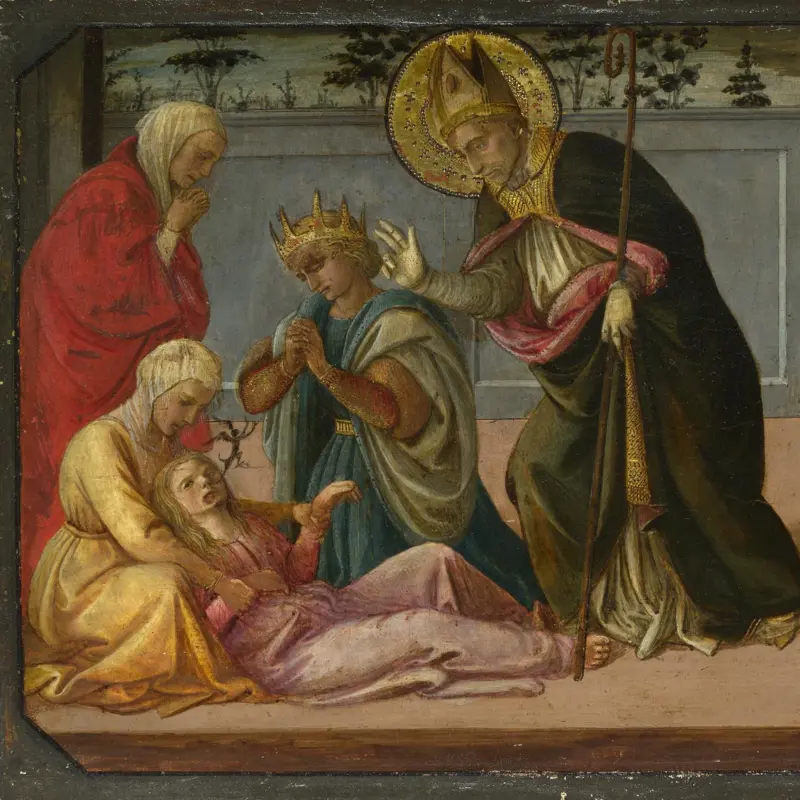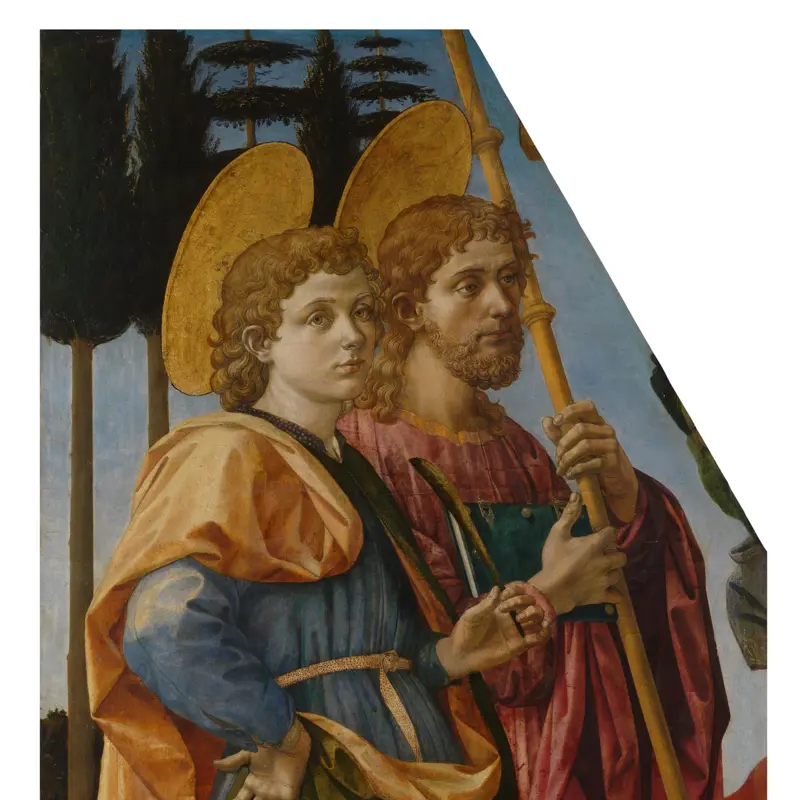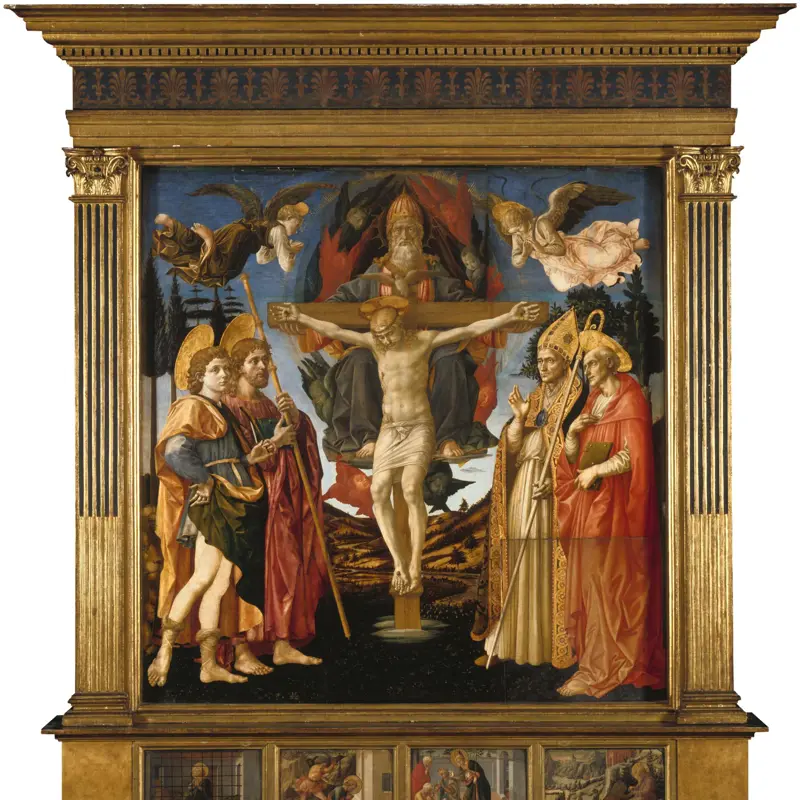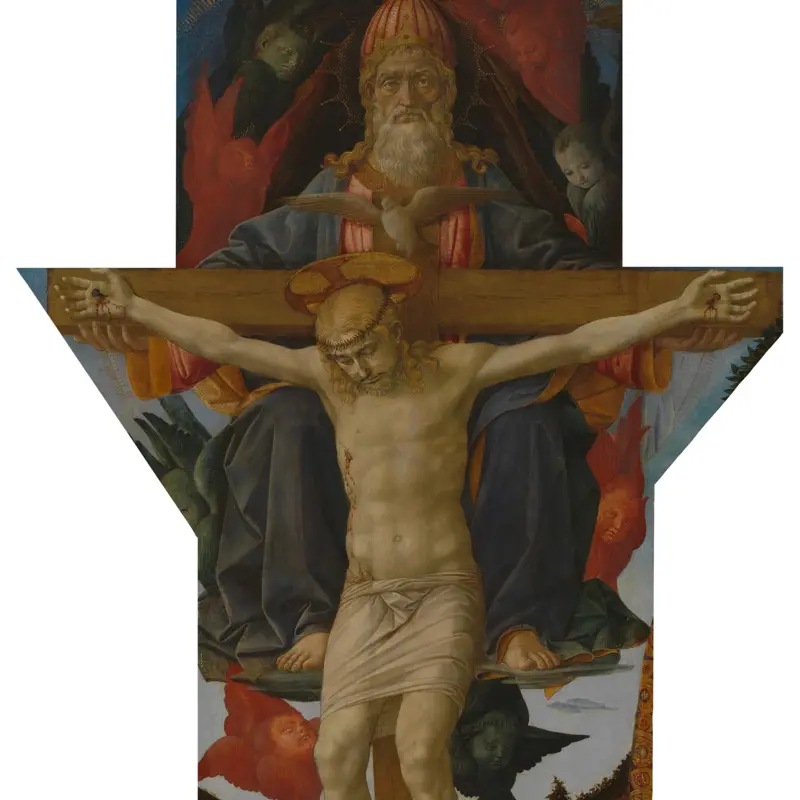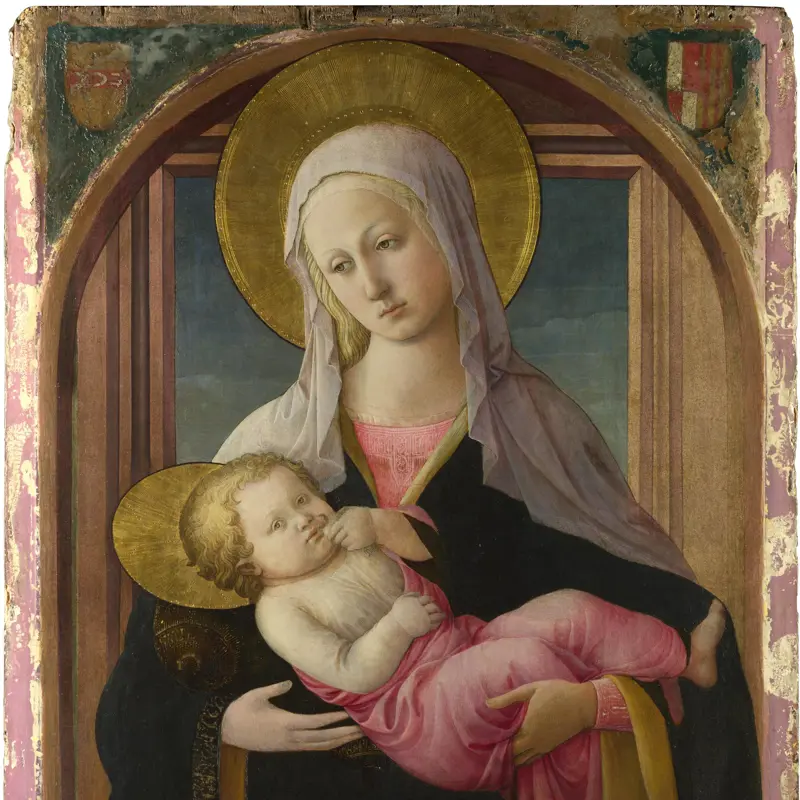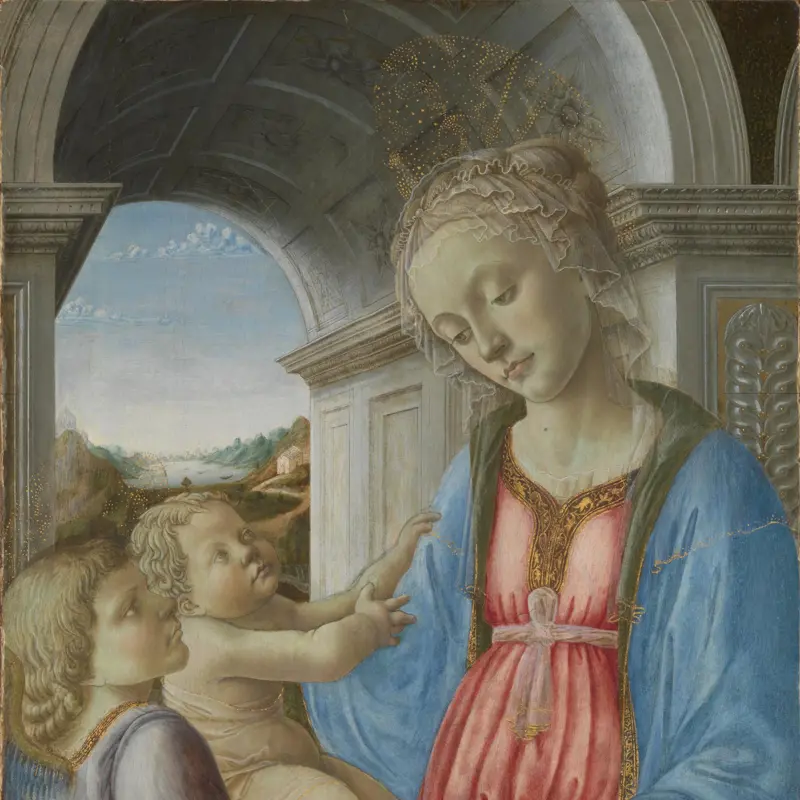'Fra Filippo Lippi was gracious and ornate and exceedingly skilful; he was very good at compositions and at variety, at colouring, relief, and in ornaments of every kind', wrote Cristoforo Landino in 1480; his comment remains a valid assessment of Fra Filippo's style. Fra Filippo's pictures were popular in Florence and he was actively supported by the Medici family, who commissioned the pictures of 'The Annunciation' and the 'Seven Saints'.
As an orphan Filippo was sent to the Carmelite friary in Florence. But he was not temperamentally suited to be a friar. His life is a tale of lawsuits, complaints, broken promises and scandal. Fra Filippo's fame as a painter spread beyond his native Florence and he spent long periods painting fresco cycles in Prato and Spoleto, where he died. In 1456 he abducted a nun, Lucrezia Buti, from the convent in Prato where he was chaplain. He was finally permitted to marry her. Their son Filippino was later taught in Lippi's workshop, as was Botticelli.
Lippi's early style is based on that of Masaccio but he later moved towards more richly decorative and lyrical effects.
Fra Filippo Lippi
born about 1406; died 1469
Works by Fra Filippo Lippi
(Showing 6 of 15 works)
This panel shows a twelfth-century monk, Saint Bernard of Clairvaux, having a vision of the Virgin Mary. It is shaped like an ‘overdoor’ – a picture designed to hang above a doorway – and was probably made to decorate the Palazzo Vecchio (the town hall) in Florence; Saint Bernard was patron saint...
Not on display
Seven saints – all patron saints of members of Florence’s ruling family, the Medici – talk and interact as though Lippi was painting an animated portrait of a group of historical figures.On the far left is Saint Francis. His meditation on the suffering of Christ was so profound that he developed...
The Archangel Gabriel, huge peacock-feather wings outstretched behind him, kneels in front of the Virgin Mary, his head bowed in reverence. He has arrived with the news that she will conceive a child, Jesus Christ, through the Holy Ghost.A small dove, the symbol of the Holy Ghost, flies towards t...
This angel comes from a pala (an altarpiece with a single, unified surface) which was sawn into pieces in the eighteenth century but reassembled by the National Gallery in the 1930s. It was made for a confraternity of priests, and shows the Trinity (God the Father, Christ and the Holy Ghost as a...
This angel comes from a pala (an altarpiece with a single, unified surface) which was sawn into pieces in the eighteenth century, but reassembled by the National Gallery in the 1930s. In a particular light you can see the joins where the parts have been stuck together.The altarpiece was made for...
This large pala (an altarpiece with a single, unified surface) was painted for a church in Pistoia, but sawn into pieces in the eighteenth century. It was reassembled in the National Gallery – look closely and you can see lines where the fragments were put back together.Two fourth-century saints...
Fra Filippo Lippi and workshop
Saint James kneels in prayer; behind him a vigorous executioner raises his sword. James the Great was the first of Christ’s apostles to die for his faith, being put to death by King Herod Agrippa in Jerusalem in AD 44.This is one of five scenes from the predella, the bottom tier, of the Pistoia S...
Fra Filippo Lippi and workshop
Saint Jerome sits in the wilderness, carefully removing a thorn from the paw of a very endearing lion – it went on to be his companion. This was a popular subject in medieval art, although Jerome is usually just shown with the lion as a pet, rather than actually treating it.This is one of five sc...
Fra Filippo Lippi and workshop
A young saint has been locked up with four lions. This is Saint Mamas of Caesarea, a Greek martyr who was tortured and executed for his faith by the Roman Emperor Aurelian. According to his legend he was imprisoned and then thrown to lions – although not at the same time, as here.This is one of f...
Fra Filippo Lippi and workshop
A bishop saint – Saint Zeno, Bishop of Verona in the fourth century – is exorcising a demon from a young girl; you can see the little black figure jumping out of her mouth. Her parents watch anxiously. Her father, wearing a crown, kneels beside her: he is Emperor Gallienus. According to Zeno’s le...
Francesco Pesellino and Fra Filippo Lippi and Workshop
These saints come from a large pala (an altarpiece with a single, unified surface) which was sawn into pieces in the eighteenth century and later reassembled in the National Gallery. Look closely and you can see lines where the fragments were put back together. The altarpiece was begun by Frances...
Francesco Pesellino and Fra Filippo Lippi and workshop
This large altarpiece – one of the few in the National Gallery which is almost complete – has had an eventful life. It was commissioned in 1455 from the Florentine painter Francesco Pesellino, and is his only surviving documented work. He died in 1457 and it was finished by Fra Filippo Lippi and...
Francesco Pesellino and Fra Filippo Lippi and workshop
This large pala (an altarpiece with a single, unified surface) was painted for a church in Pistoia but was sawn into pieces in the eighteenth century; most of it was later reassembled in the National Gallery. Look closely and you can see lines where the separate fragments were put back together.I...
Fra Filippo Lippi and workshop
The Christ Child lies in the Virgin Mary’s arms and holds a small bird to his lips. This tender image was intended to show the bond between Christ and his mother.Christ’s pose is found in paintings of the Virgin adoring the Child that were produced by Lippi and his workshop, such as the so-called...
Not on display
Imitator of Fra Filippo Lippi
The design of this tender image of the Virgin Mary with the Christ Child and an angel is derived from a picture by Fra Filippo Lippi, the Florentine painter and monk. It was a popular composition in Florence and there are numerous versions of it by different artists. The semi-transparent veil wit...
Not on display
You've viewed 6 of 15 works

